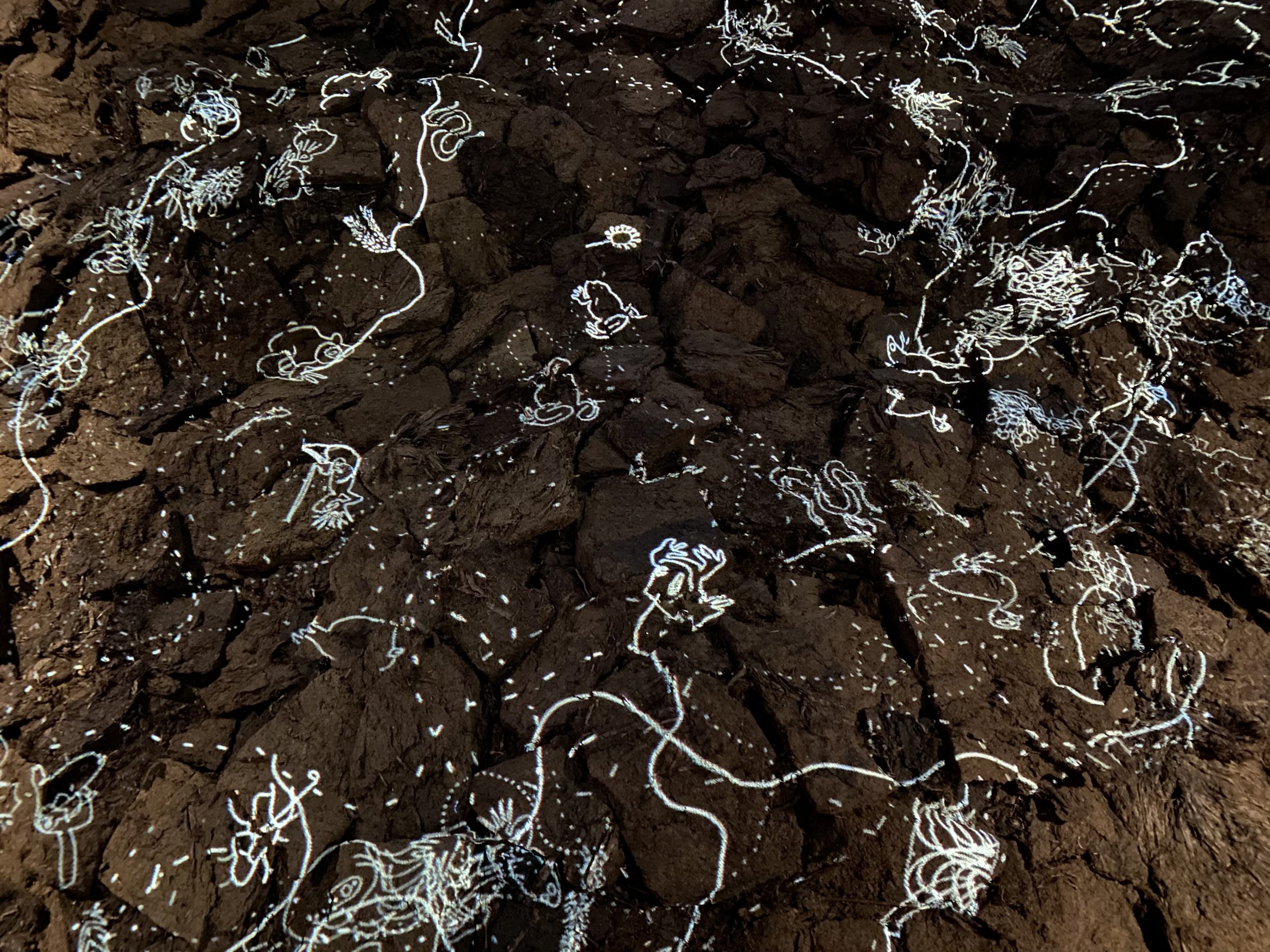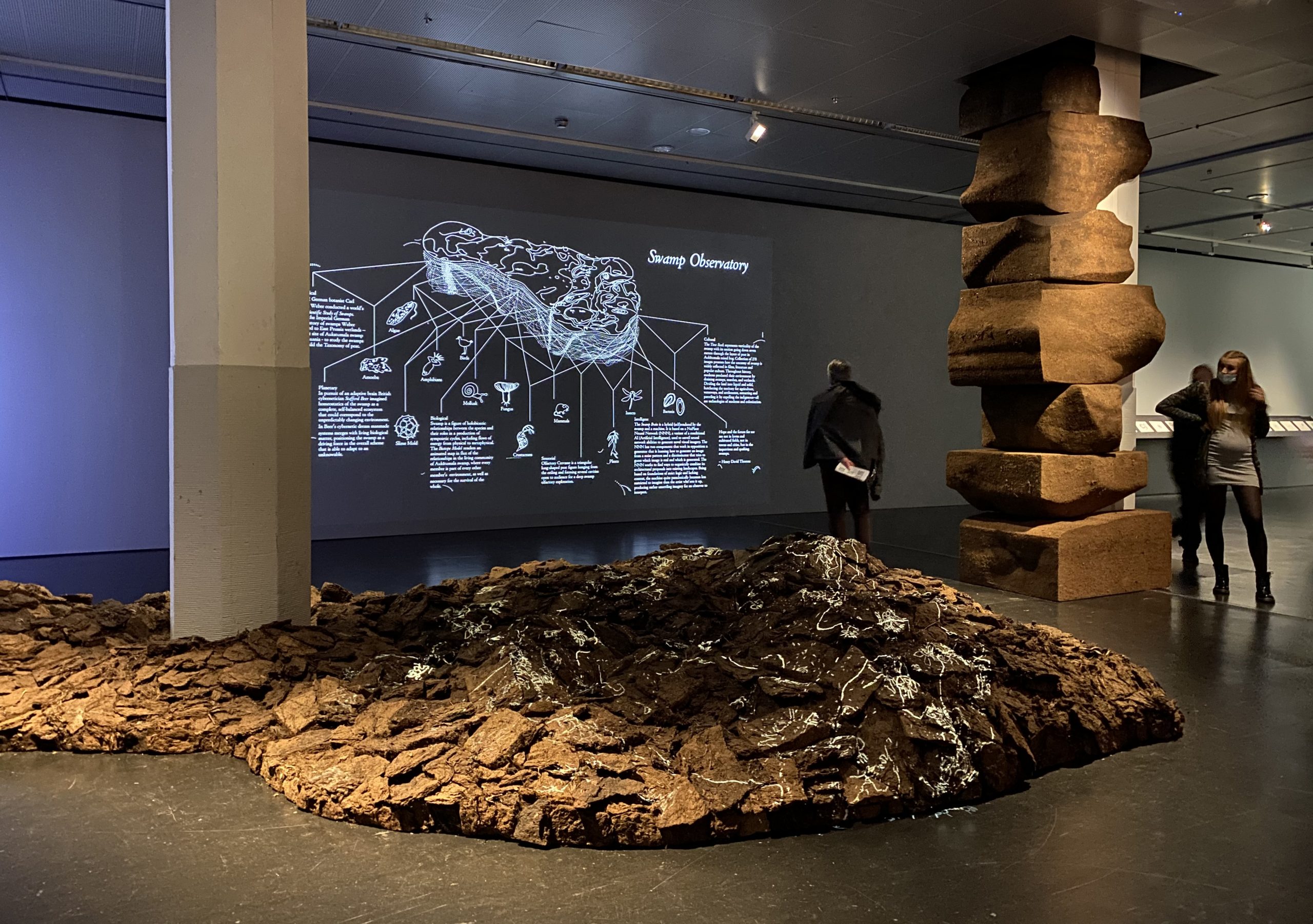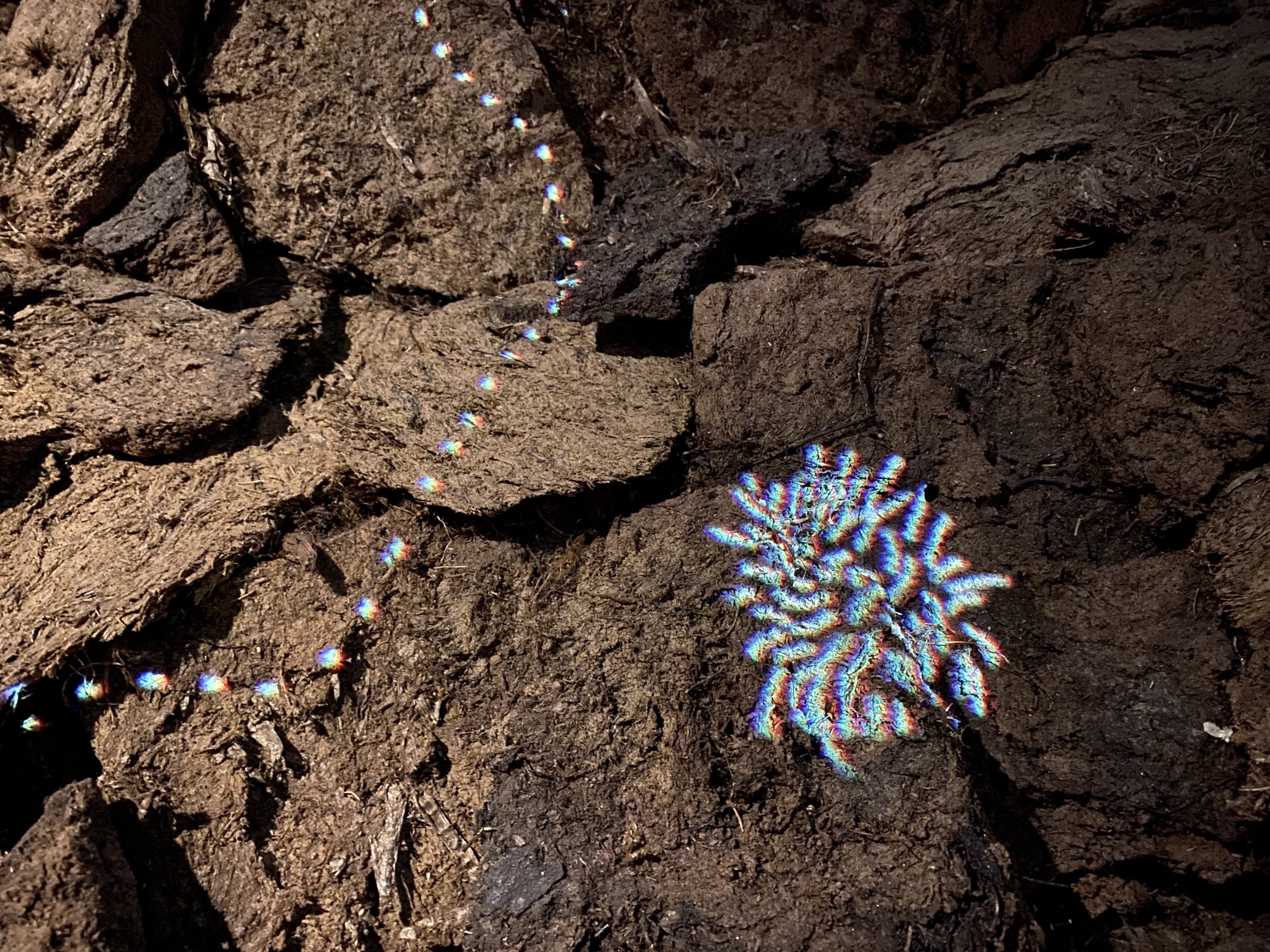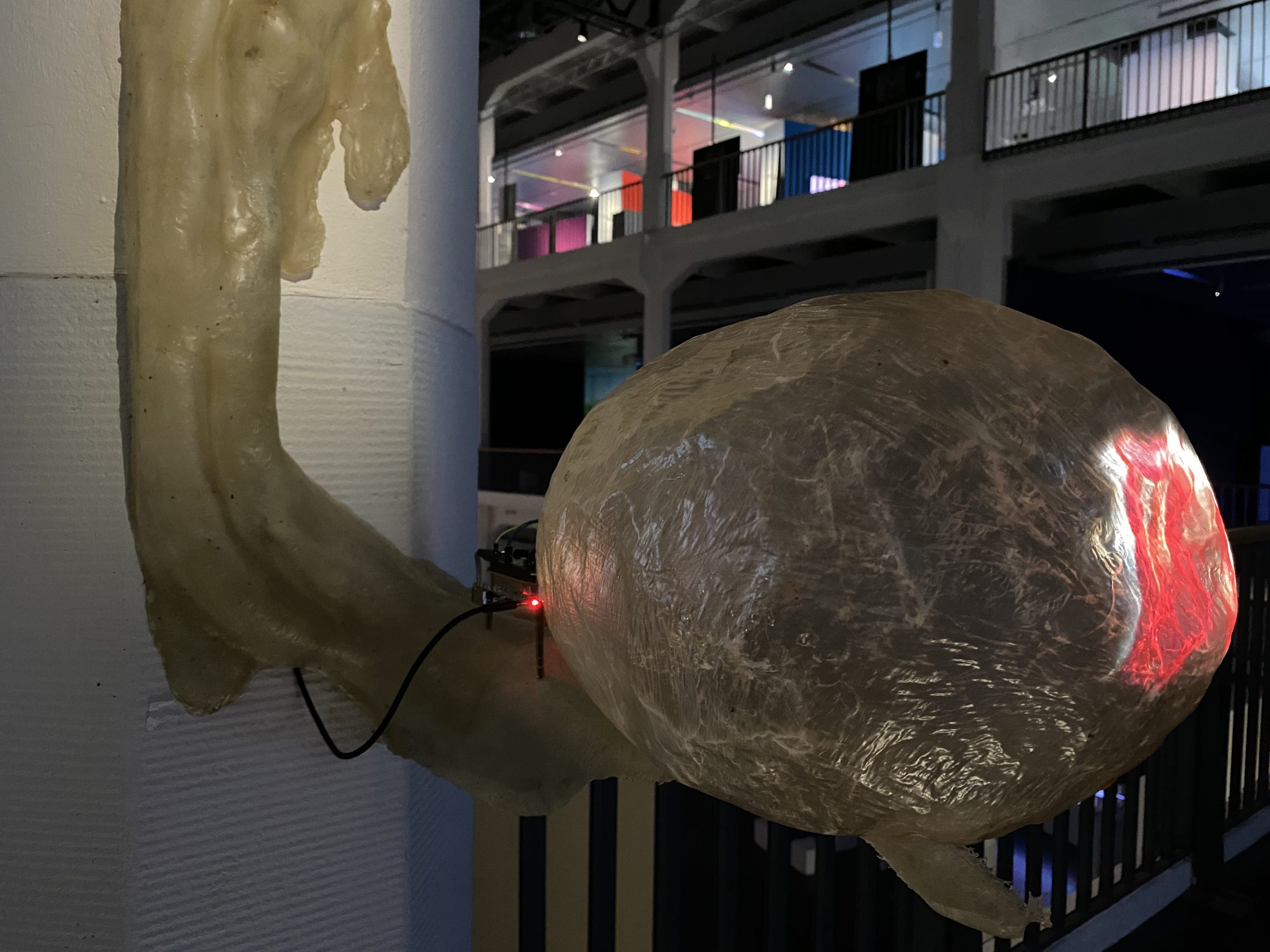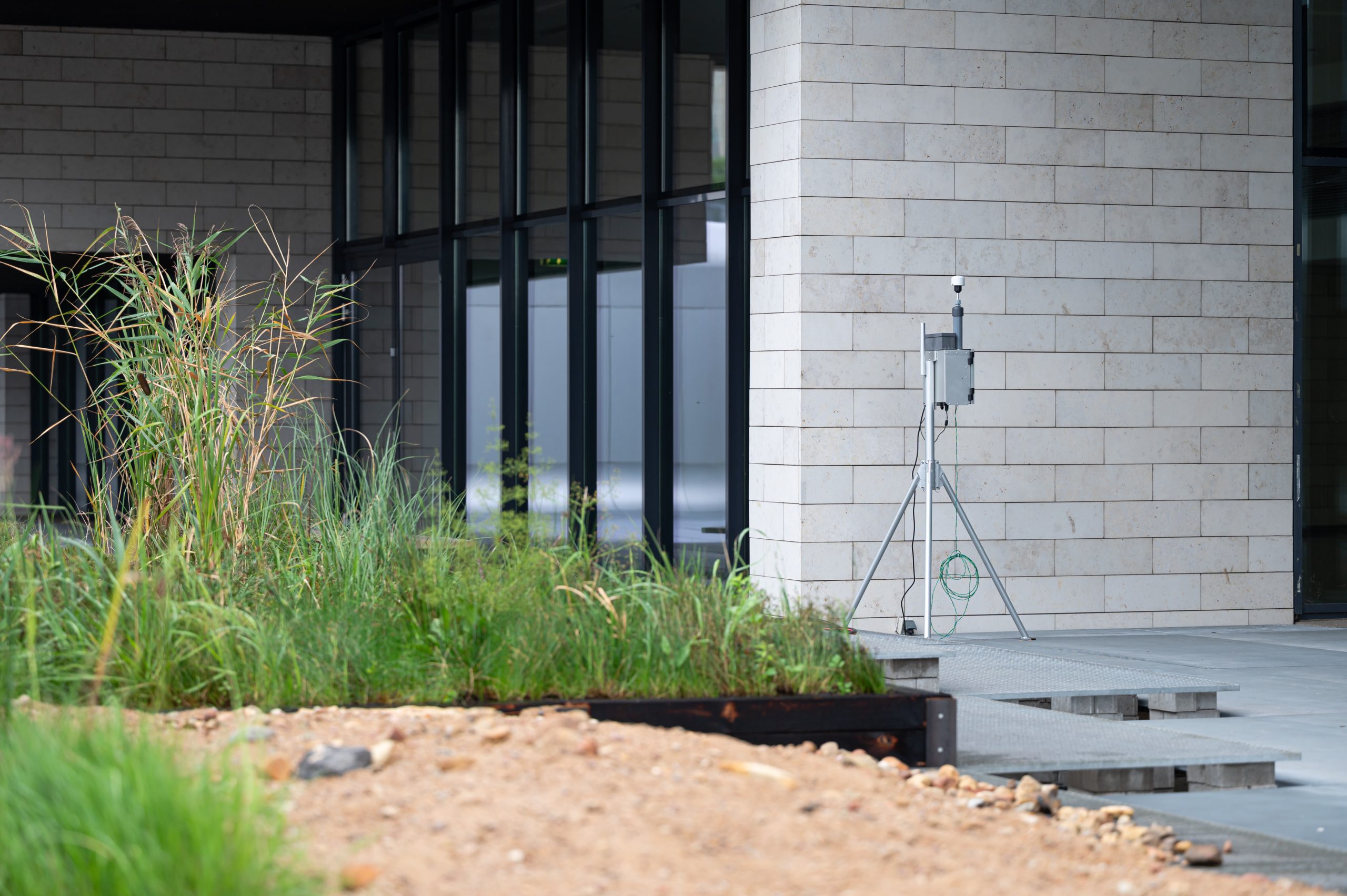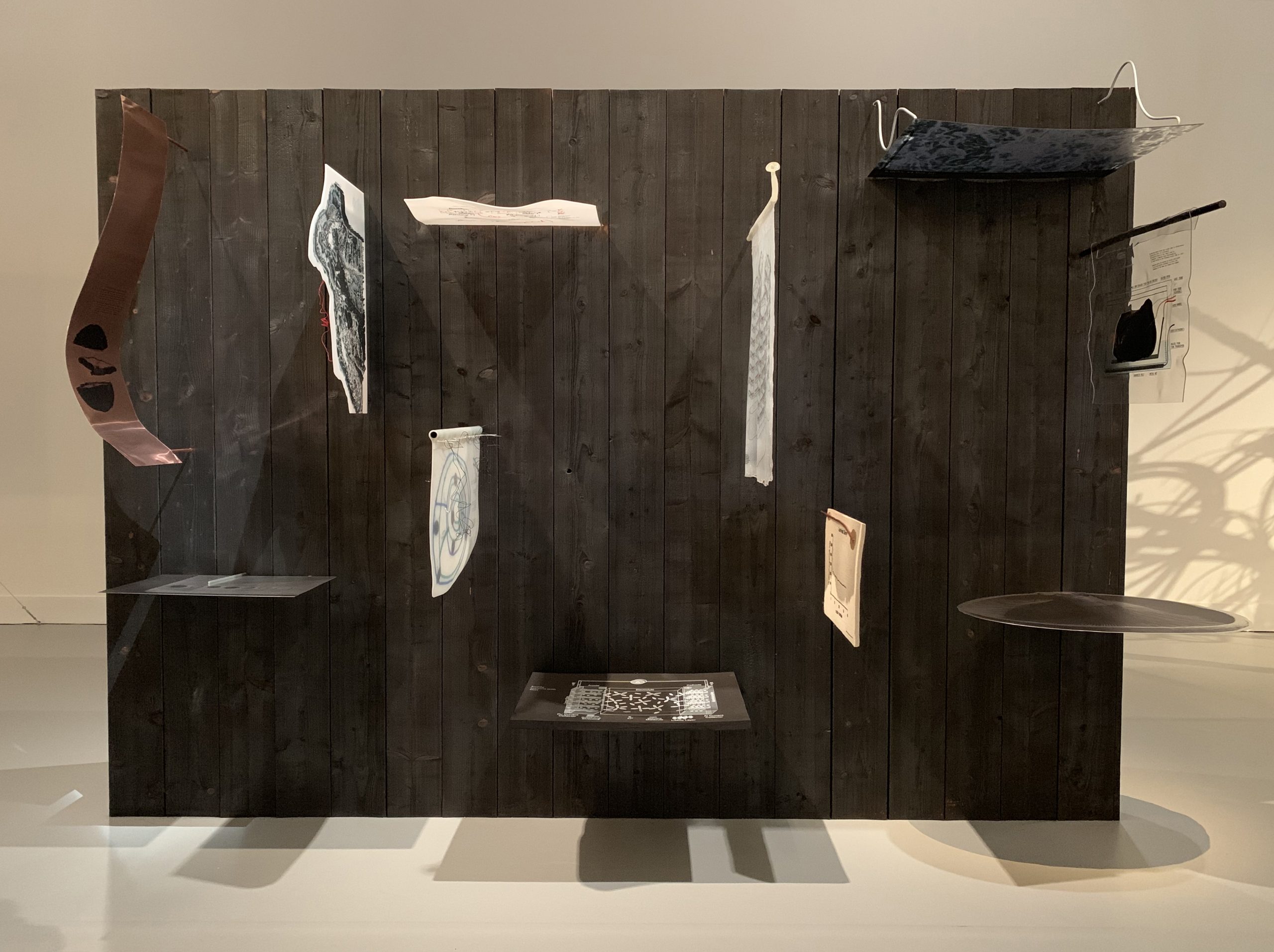
The Swamp Observatory installation at the Critical Zones. Observatories for Earthly Politics exhibition, curated by Bruno Latour and Peter Weibel, at the Center for Art and Media, ZKM in Karlsruhe, plays with the idea of the “return of a Swamp”. Four swampian figures – Biotope Model, Time Stack, Olfactory Crevasse and Swamp Brain constitute a hybrid artistic-scientific model, or the instrument, that presents swamp as interface to Gaia.
Swamp Observatory. Mixed media installation, data visualization, AI module, video projections, peat, ox bladder, resin cast, dimensions variable. Urbonas Studio, MIT CV © 2020
Produced in collaboration with the ZKM / Karlsruhe; and the MIT Climate Visions / Cambridge, MA. Artists: Nomeda & Gediminas Urbonas. Research: Nikola Bojić, Kristupas Sabolius. Architecture: Indrė Umbrasaitė. Fabrication: Simona Kačinskaitė, Rytis Urbanskas. Drawings: Serge Rompza. Scientific advisors and data: Vesta Aleknavičiūtė / Vytautas Magnus University / Kaunas, Jūratė Sendžikaitė / Nature Research Centre / Institute of Botany / Lithuania. Processing programming: Thomas Sanchez Lengeling / MIT Media Lab. AI module: Jonas Kubilius, Three Thirds / Lithuania. Smell: Jurga Katakinaitė-Jakubauskienė and Reda Valentinavičienė. Support: Arts at MIT and Philip Khoury, Associate Provost for the Arts, Gintaras Rapkauskas and Sigita Kantautienė / Durpeta UAB / Lithuania

The installation grows into a parasitic structure on the architectural envelope of the ZKM exhibition space. The figures in the installation are made of peat—decomposed and carbonized vegetation and organic matter found in swamps—the most efficient carbon sink on the planet.

As an altered sensorial organism the installation acts beyond exclusive human control, it drags the audience into a holobiontic relationship between natural, cultural, material, and immaterial swampian nodes, raising our awareness of its networked relations.
